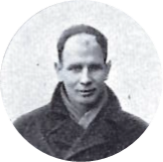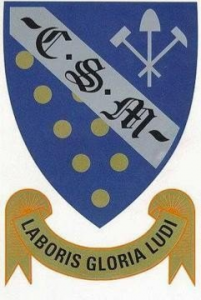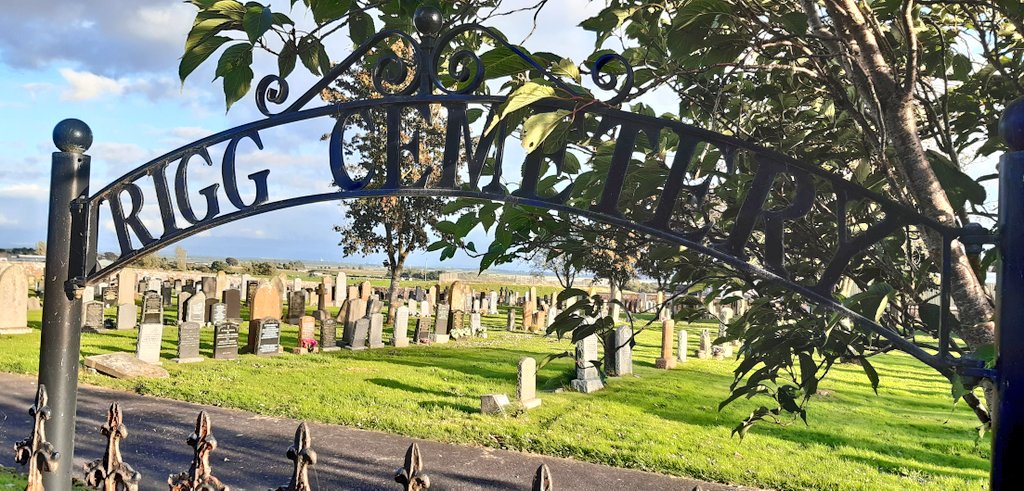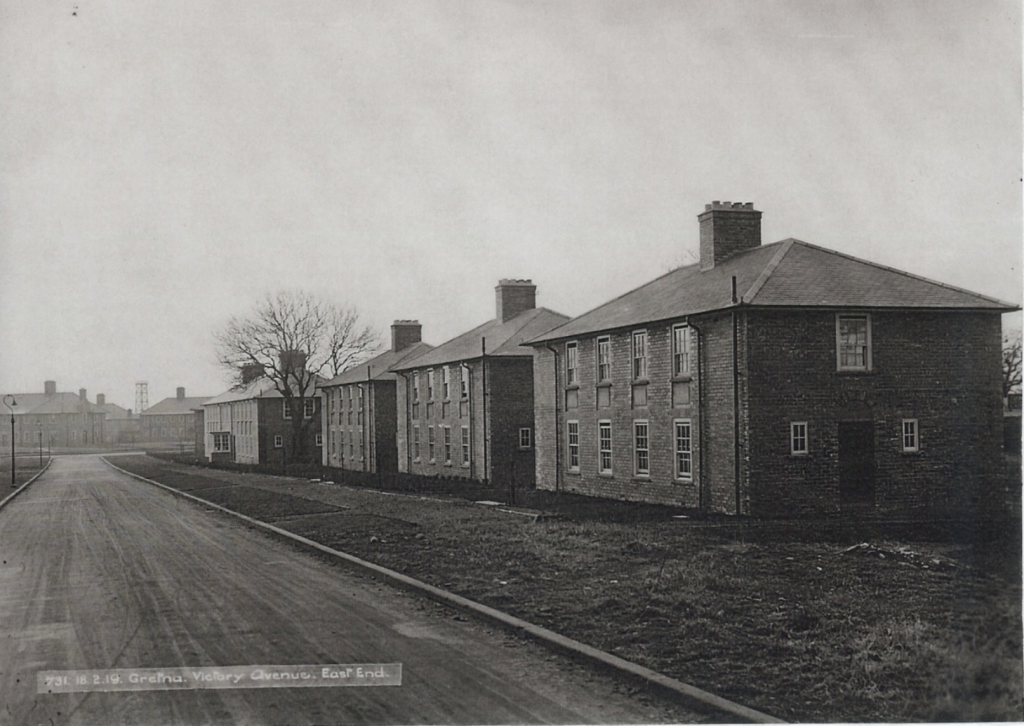

This month (July) is Disability Pride Month, and in this post, I want to talk both about working in a museum as a disabled person and the importance of researching and sharing disability history.
As I neared the end of my PhD, I came to the conclusion that what I loved most about the study of history was sharing that knowledge with people. And, when a job came up at The Devil’s Porridge Museum that gave me the incredible opportunity to continue historical research whilst also gaining vital in-museum experience, I jumped at the chance.
But I was also a little nervous.
I have Hypermobility Spectrum Disorder (HSD). HSD is a connective tissue disorder that affects joints and ligaments. Often grouped together with Ehlers-Danlos Syndrome, HSD is different for everyone a little differently. I often have joint subluxations—where joints such as my knee cap or thumb pop out of place and partially dislocate. This is extremely painful, and can also happen at any moment. These subluxations often leave me with chronic pain, and I sometimes need to use mobility aids and braces to feel a bit more stable. Another part of my condition is ‘brain fog’. This generally happens when I’m going through a flare up—when I’m in a lot of pain and/or dealing with recurrent subluxations. Brain fog spaces me out a little, and makes it difficult for me to concentrate. The combination of chronic pain and joints that pop out whenever they please also make me a lot more tired than usual—my body spends a lot of time recovering from subluxations and this can be exhausting! HSD is a life-long condition that varies a lot—sometimes I can walk and exercise and drive without pain, but other times I struggle making it up and down the stairs in my flat.
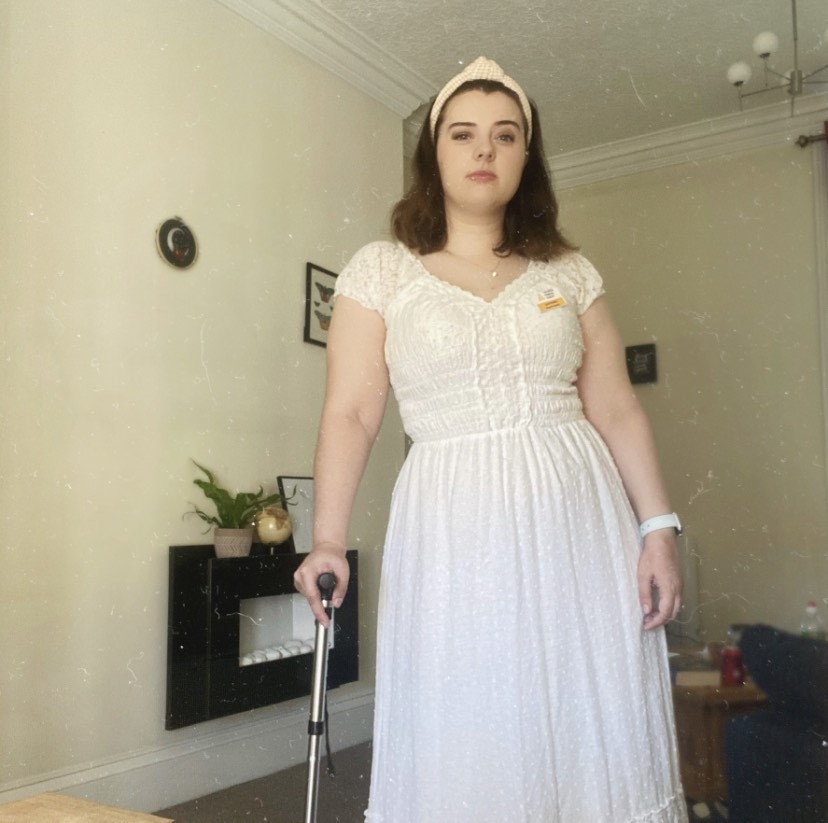
My trusty mobility aid.
Being a disabled person is sometimes tricky. Having rest days around big events to try and ensure I can make it is normal. Phoning up train stations, or places to visit to ask about lift access and how many stairs the building is similarly something I do pretty regularly. And some days I can’t drive or walk at all. So beginning a full-time job in a museum at the other side of the country was daunting. The heritage sector has made great strides forward in accessibility in recent years, with increased focus on the need to make culturally important sites and museums accessible for all.
If there’s one positive thing the last year of lockdowns has given us, it’s the increased pivot by many organisations towards the digital. In museums, this took the form of virtual exhibitions, and online talks, opening up a route for people–no matter their location, or their physical ability to be present–to virtually visit museums. Not only can such a move widen audiences, but also it means that a more diverse audience can access a rich cultural heritage. For me, beginning my job at the Porridge during lockdown, I worked remotely for months. Whilst this was sometimes lonely and frustrating, it showed me that I could do a good job from home.

The knee brace I wear after a dislocation
When I finally moved to the area and got to work in the museum for the first time, I was so excited. There is something so special about sitting at a desk in arms reach of a interesting historical object that I’m sure many of my fellow history nerds can relate to. Not only that, but I got to meet my colleagues for the first time, as well as actually seeing the museum for the first time. It was an incredible experience.
But it was also tinged with a bit of fear. When you live with a chronic condition like HSD, you learn to be aware of warning signs of a coming flare-up. I knew that my HSD would inevitably worsen at some point, and I wanted my employers to be aware that as a result of my disability, I might need some adjustments. Telling people about my condition was, as always, scary. HSD isn’t very well known, and as a ‘invisible illness’ I’ve (in the past) encountered some people that struggle to believe that I have a disability. But disabilities come in all shapes and sizes, and aren’t always visible at first glance. However, my colleagues at The Devil’s Porridge were kind, keen to understand, and willing to make the necessary adjustments for me, which was brilliant. Together, we devised a support plan and I work from home once a week, with the option for more home working if my HSD flares up. I can also use the lift when stairs are too much for me. The Devil’s Porridge Museum is staffed mainly by dedicated volunteers, and they were also made aware of my condition–I didn’t want to worry them all by having a random dislocation at work!
It’s crucially important for disabled people to both be able to work within the heritage sector, and also for sites and museums to be accessible for disabled visitors–and I believe these two goals are interrelated. According to an Arts Council England Report in 2017/18, only 4% of museum workers were disabled, leading The Museum’s Association to conclude that diversity remained static within the sector. This is a disappointing statistic. History should be accessible to everyone, and this is especially so when it comes to areas that have traditionally been neglected, like disability history.
A fascinating and wide-ranging area of history, disability history is (to me) endlessly interesting and also very poignant. It can be viewed from a number of perspectives from development of medical treatments, to the records of charities and work-houses, to recollections of disabled people themselves. Historic England have compiled a great overview of disability history in England, whilst both The National Archives and The Institute of Historical Research also have resources and tips on researching disability history in the archives. The history of disabled people cannot be divorced from the wider historical context of time and place, and this is never more true than during, and in the aftermath of World War One.
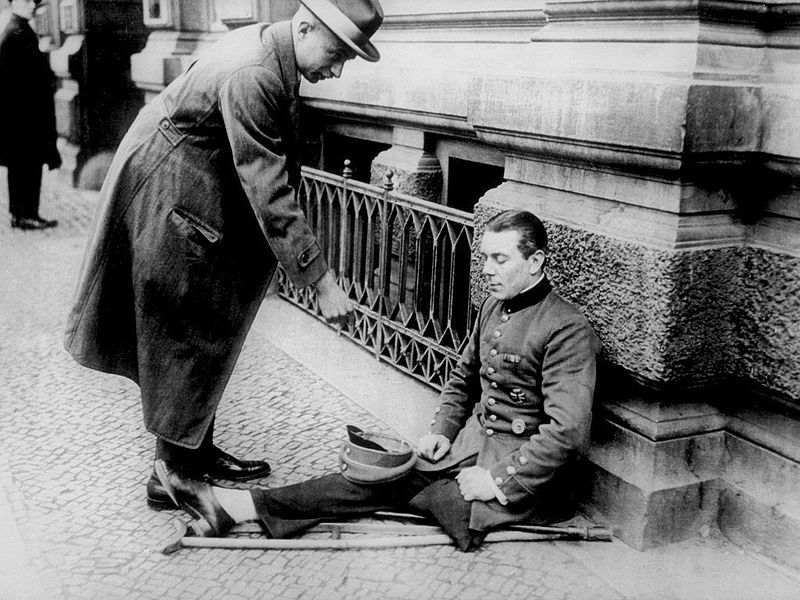
Attribution: Bundesarchiv, Bild 146-1972-062-01 / CC-BY-SA 3.0
Much has been written about the horrific injuries soldiers at the Front received during the Great War. According to Martina Salvante, 8 million people were disabled in World War One. Not only did these people have to reconcile their disabilities with a post-war world, but many also struggled with ‘shell shock’, a form of traumatic disorder. This influx of disabled veterans also raised questions about the treatment and attitudes towards disabled people–organisations were established to help support this men, whether in re-training them to work in a new occupation or with living independently.
However, it wasn’t only disabled soldiers who had to readjust to life with a disability. Many who worked in munitions factories, such as HM Factory Gretna were also disabled. Some had arrived at the factory disabled or injured and were unable to do active service. Eric De Clemont lost his eye and contracted miner’s phthisis before the outbreak of war. Considered unfit for active service, Eric spent the war working in the cordite section as a sub-section officer at Gretna. Others were disabled through their work at Gretna. Victoria May McIver lost the lower part of her arm in an accident at the factory. In later life, one of her son’s friends was amazed at her skills at potato peeling, balancing the potato in the crook of her elbow.
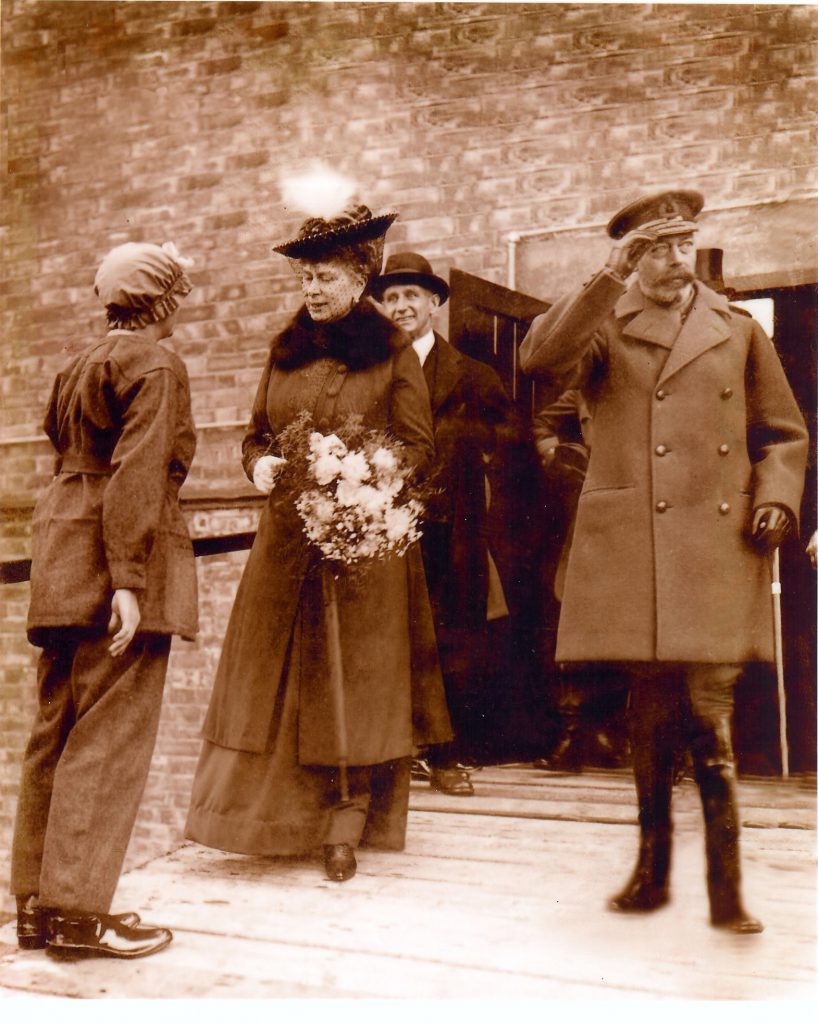
Victoria gives a bouquet of flowers to Queen Mary during the Royal Visit to Gretna in 1917. She was chosen to present the bouquet to the Queen on account of being the youngest munitions worker at Gretna Works Hospital.
There are many accounts of workers afflicted with chronic illnesses after working at HM Factory Gretna. There are accounts of women whose whites of their eyes turned yellow, and many suffered breathing problems long after the war was finished. The health impact of working in munitions during WW1 still isn’t clear, and may never be, due to a fragmentary nature of records kept and a lack of understanding of the medical effects of working with cordite. However, what I think is clear is that munitions factories like HM Factory Gretna often operated as hubs for disabled people to work in wartime, and this is a crucial, and often untold part of the history of disability in WW1. Many men considered ‘unfit’ for active, front line service were diverted into working in munitions, as an acceptable, yet maybe not as prestigious, alternative to being a soldier. These men contributed to the war effort in a different, but no less powerful way, by supplying the Front with ammunition. Similarly, all munitions workers risked injury and death as a result of their work in factories and with dangerous and volatile chemicals. Many, like Victoria May McIver, lost limbs, others were disabled in less visible but no less traumatic ways. These conditions would often dog them throughout their lives, and was a direct result of their wartime work.
Whilst the horrific injuries soldiers received during the war increased visibility for disabled people in the UK, it would be decades before The Chronically Sick and Disabled Persons Act of 1970 gave statutory provision to disabled people. Disability history isn’t widely known–it isn’t taught in schools, and even when (inevitably) other areas of history overlap with the history of disability, the focus is generally on medical developments and disabled people aren’t centred as historical actors in their own story. This needs to change. As a historical researcher and disabled person, I have been woefully ignorant of this history, but it is important to learn it, and to share it.
Disabled history is a crucial part of our collective national story, and the disabled workers at HM Factory Gretna, and other munitions factories, during World War One are a very small part of this wider rich and complicated history.


